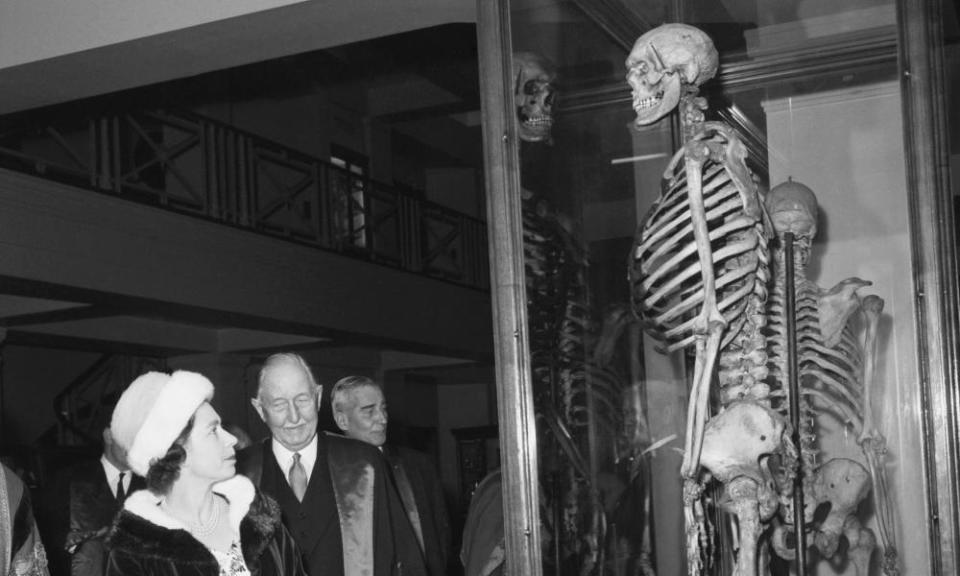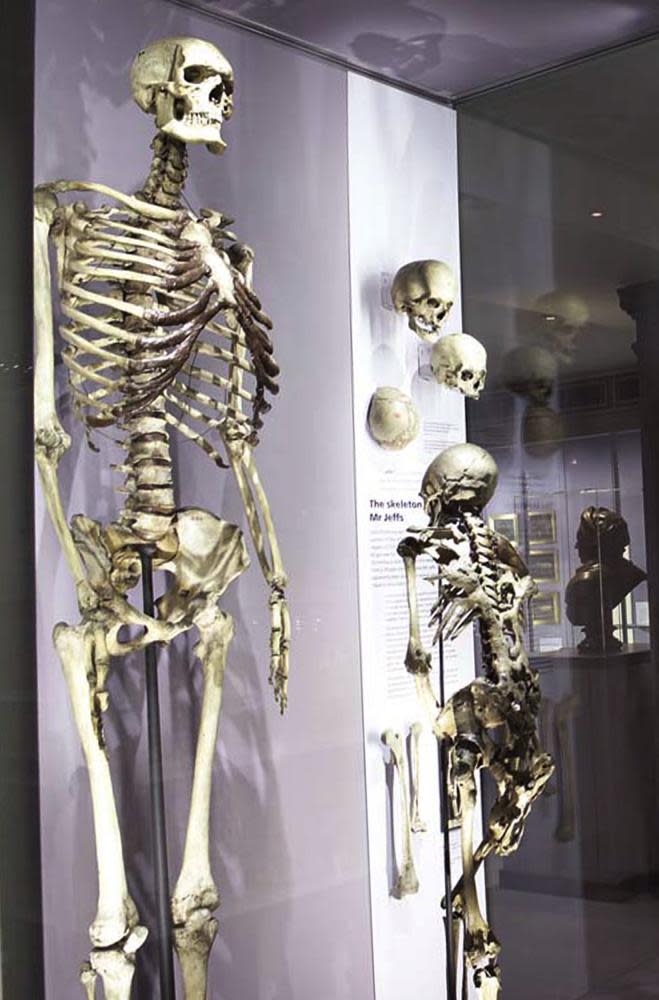Hilary Mantel calls for skeleton of Irish 'giant' to be repatriated

The author Hilary Mantel has called for the Royal College of Surgeons to repatriate the skeleton of an Irish “giant” whose bones remain in storage in London two centuries after he asked to be buried at sea.
Charles Byrne had a genetic form of gigantism that caused him to grow to more than 2.31 metres (7ft 7in) tall. His height made him a celebrity in 18th-century London, and prior to his death in 1783 he went to great lengths to try to keep his skeleton from being put on display – a fate then usually reserved for executed criminals.
But despite his wishes and plans for a burial at sea his remains were acquired by the pioneering Scottish surgeon and anatomist John Hunter, possibly after he bribed an undertaker to switch corpses..
Byrne’s skeleton appeared in Hunter’s private collection four years later and stayed on public display for much of the subsequent two centuries at the Hunterian Museum, run by the Royal College of Surgeons.
In 2018, the Hunterian Museum said it would consider Byrne’s fate during renovations, suggesting that they could reconsider the matter. But the museum’s reopening has been pushed back to 2022 and beyond, and further protests have arisen.
“It’s time Charles went home,” Mantel said in an email to the Guardian. The Booker-winning Wolf Hall writer is the author of a fictionalised portrait of Byrne, entitled The Giant, O’Brien.
She added: “I know that in real life he was a suffering soul, nothing like the fabulous storybook giant I created, and that his gratifications were fewer and his end very grim. I think that science has learned all it can from the bones, and the honourable thing now is lay him to rest. It would suit the spirit of the times, and I don’t see a reason for delay. He’s waited long enough.
“I assumed the burial at sea was just an attempt to evade Hunter, and that if the bones were recovered from the RCS he would be buried in Ireland. I hope there would be a welcome party for him, and I hope I can come and join it.”

Byrne was born in 1761 in a rural area of County Derry called Littlebridge, between Cookstown and the western shore of Lough Neagh. He left home to make his fortune and travelled through Scotland and the north of England as a “curiosity act” before settling in London, where he traded on his celebrity.
His success led to him moving into dwellings in Charing Cross, and inspiring a pantomime called The Giant’s Causeway. However as Byrne’s condition worsened and health began to deteriorate he began drinking heavily, and died in 1783, aged 22.
Hunter had approached Byrne when he was alive and had offered him a financial settlement in return for his body when he died. Byrne declined, and was so afraid of ending up as an exhibit after his death, he arranged with his friends for a burial at sea. Although his body got as far as Margate, somewhere between there and the sea it ended up in Hunter’s possession, and ultimately on display at the museum four years later.
Dr Kathleen Liddell, director of the Centre for Law, Medicine and Life Sciences at the University of Cambridge, said the museum would gain from changing tack.
“Personally I think it would be suitable to have Charles Byrne’s bones buried, and replaced by a life-size image of them,” she said. “There is no evidence that he dissented from having images displayed. The museum could use this change to highlight the ethical, historical and legal issues. Currently, unfortunately, it’s the debate that is buried – the museum needs to engage with the public about this. They’ve had a long time to think about it.”
Byrne’s DNA has already been extracted, sequenced, and used in medical research. “This is still something Byrne objected to,” said Dr Cliona McGovern, head of forensic and legal medicine at University College Dublin. “We know Byrne did not consent to his body being on display and most unusually for a case from 1783, we know what his explicit wishes were: burial at sea. Hunter interfered with a burial, which was (and is) a legal right, and he also made no reference to any of Byrne’s family, who also had a legal right over Byrne’s estate.”
At the time, the use of bodily remains for display or anatomy was reserved for traitors and murderers.
“Byrne was determined that such humiliation was not for him,” McGovern added. “Newspaper accounts of the time reported that he wanted to be weighted down and buried at sea. He was not a criminal and he did not want his body to be disinterred by body snatchers.”
Francie Molloy, MP for mid-Ulster, in which the area where Byrne was born is sited, has called on the museum to respect Byrne’s living wishes. “Alternatively,” he said, “we would be more than happy to welcome home the remains and have them rest in his native area.”
A spokeswoman for the Hunterian Museum said it would not be reopening for “at least” another two years.
“An update on plans for all the displays in the new museum will be issued in due course.”

